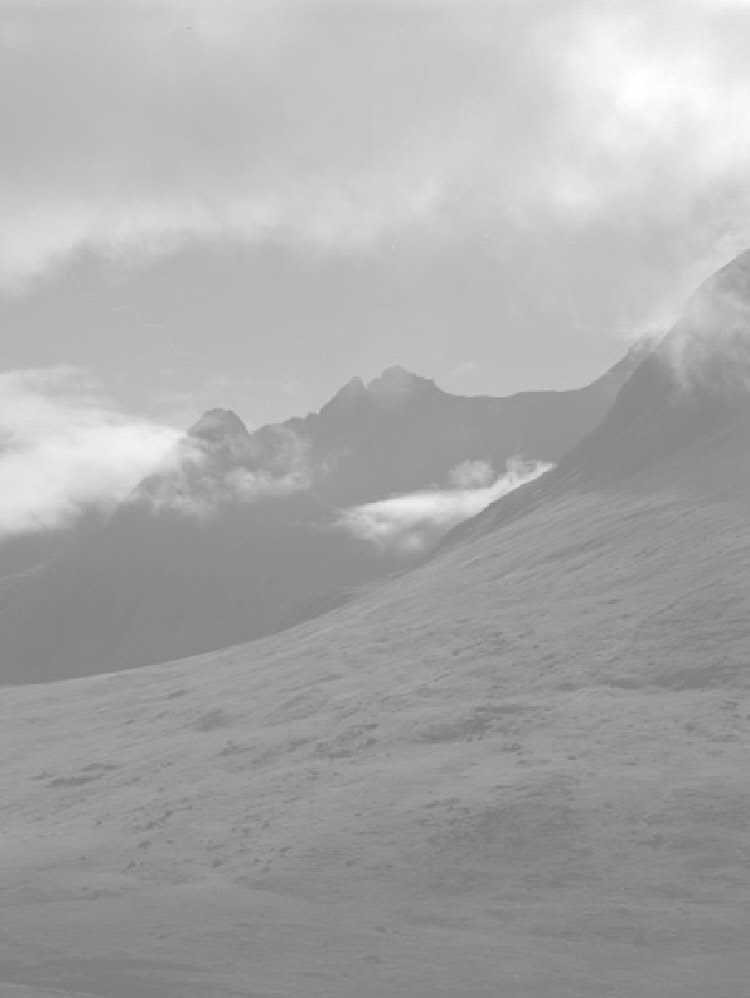
A note on Platinum printing.
The process was invented in the 1870’s and has remained a superlative medium ever
since; offering prints of great luminosity, richness, and long tonal range allied
with an incredible longevity ( the life of the print is essentially the life of the
paper which is many hundreds of years!). The cotton rag paper is hand coated with
a mixture of Platinum and Palladium salts combined with a sensitiser, varying the
relative proportions offers some contrast control. On drying, the 5”x 4” negative
is placed within the coated area and the whole blasted with ultra-
Large format information.
Despite being large and slow to use large format cameras have a number of advantages as landscape cameras.
Resembling the very early cameras; having a bellows connecting a front standard carrying the lens, to a rear standard carrying a ground glass viewing screen on which the image is composed, the glass being replaced by a film holder to capture the image.
Despite it’s antiquated appearance, it remains a superlative photographic tool; the front and rear standards can be moved independently of each other allowing a control over perspective and depth of field that is unobtainable with other cameras.
Another advantage is that the film is in single 5”x 4” sheets, this is sufficiently large to allow one to contact print ( which is how Platinum prints are made), the negatives can be printed onto standard photographic paper too using an (albeit rather large) enlarger.